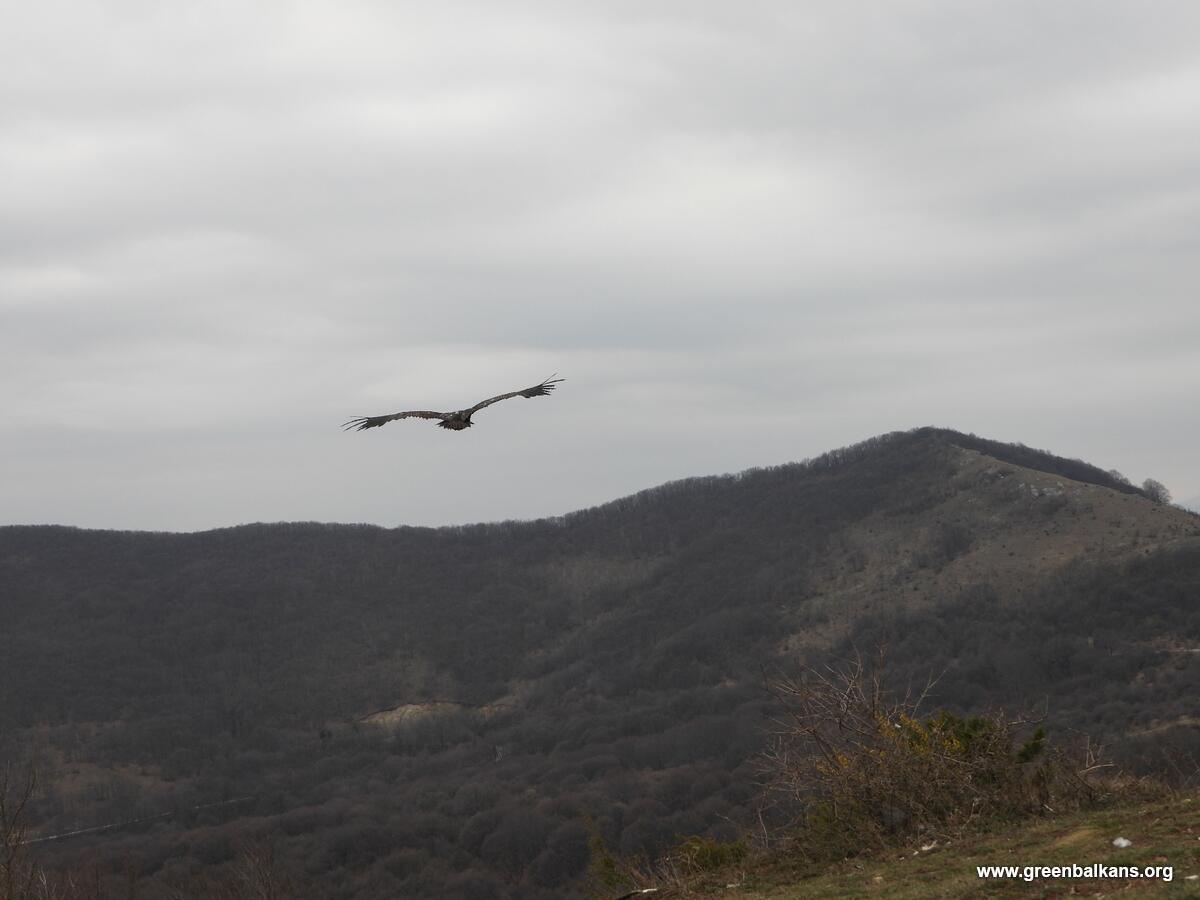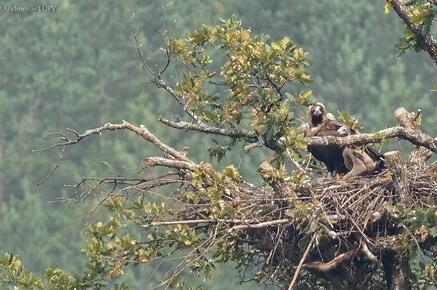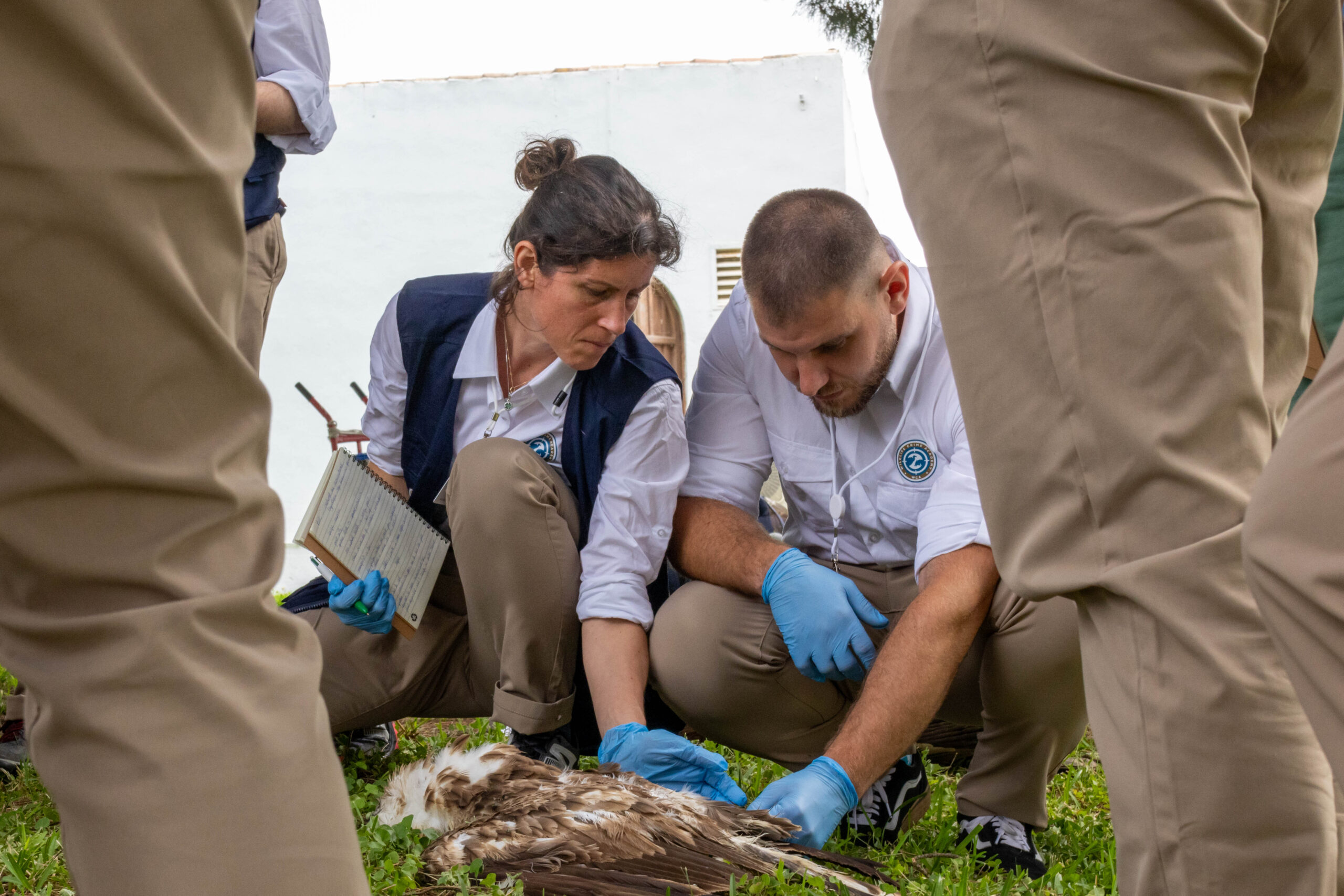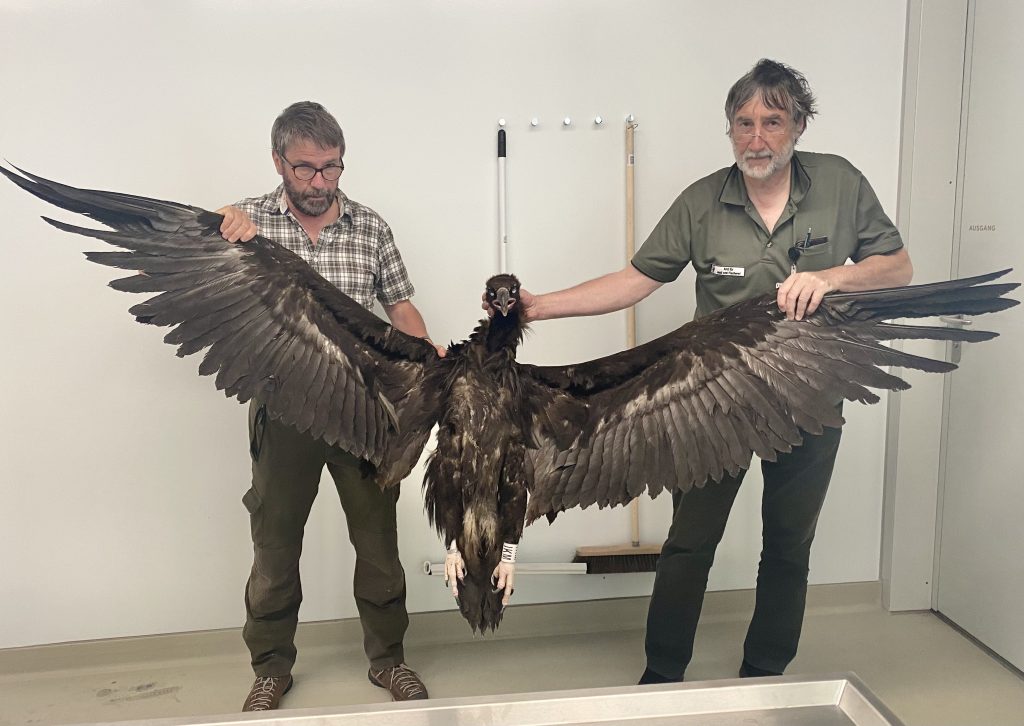
We all know that plastic can be deadly for wildlife, causing detrimental effects on biodiversity. But, little is known on how plastic impacts vultures. Unfortunately, a recent incident where a Cinereous Vulture died from plastic ingestion in Switzerland shows that it can be just as deadly for vultures.
Plastic: a significant danger for wildlife
Although plastic is not directly toxic, it is nevertheless polluting our environment more and more, even reaching remote corners in the Arctic. Animals around the world, especially marine wildlife, can die after ingesting plastic or getting entangled in it. But plastic waste does not only threaten marine species.
The problem is not limited to coastal areas as we can see from the increasing number of wild animals found with large amounts of plastic in their stomachs. In Switzerland, the case of a deer near Arosa, which contained 6 kg of plastic waste in its stomach, made headlines back in 2019. Large birds such as the White stork are also particularly affected. In fact, an investigation in the country revealed that more than a third of dead young storks previously ingested plastic. Another sad incident recently occurred in the canton of Schwyz, where a Cinereous Vulture died from plastic waste.
Cinereous Vultures in the Alps
Cinereous Vultures are the largest members of the vulture family in Europe and can reach a wingspan of up to 3 m and weigh 12kg. Their presence in the Alps is relatively rare, especially in Central Switzerland, which only had three sightings of this species in 2021. Similar to Bearded Vultures, an elaborate project reintroduced Cinereous Vultures in the French Alps. Five pairs of this species currently live in the Southern Alps in France. In 2020, three pairs successfully bred in Verdon, and LPO PACA ringed all three young in the nest. One of these young Cinereous Vultures was last observed at the parental territory on 9 April 2021, after which its trail was lost in France.
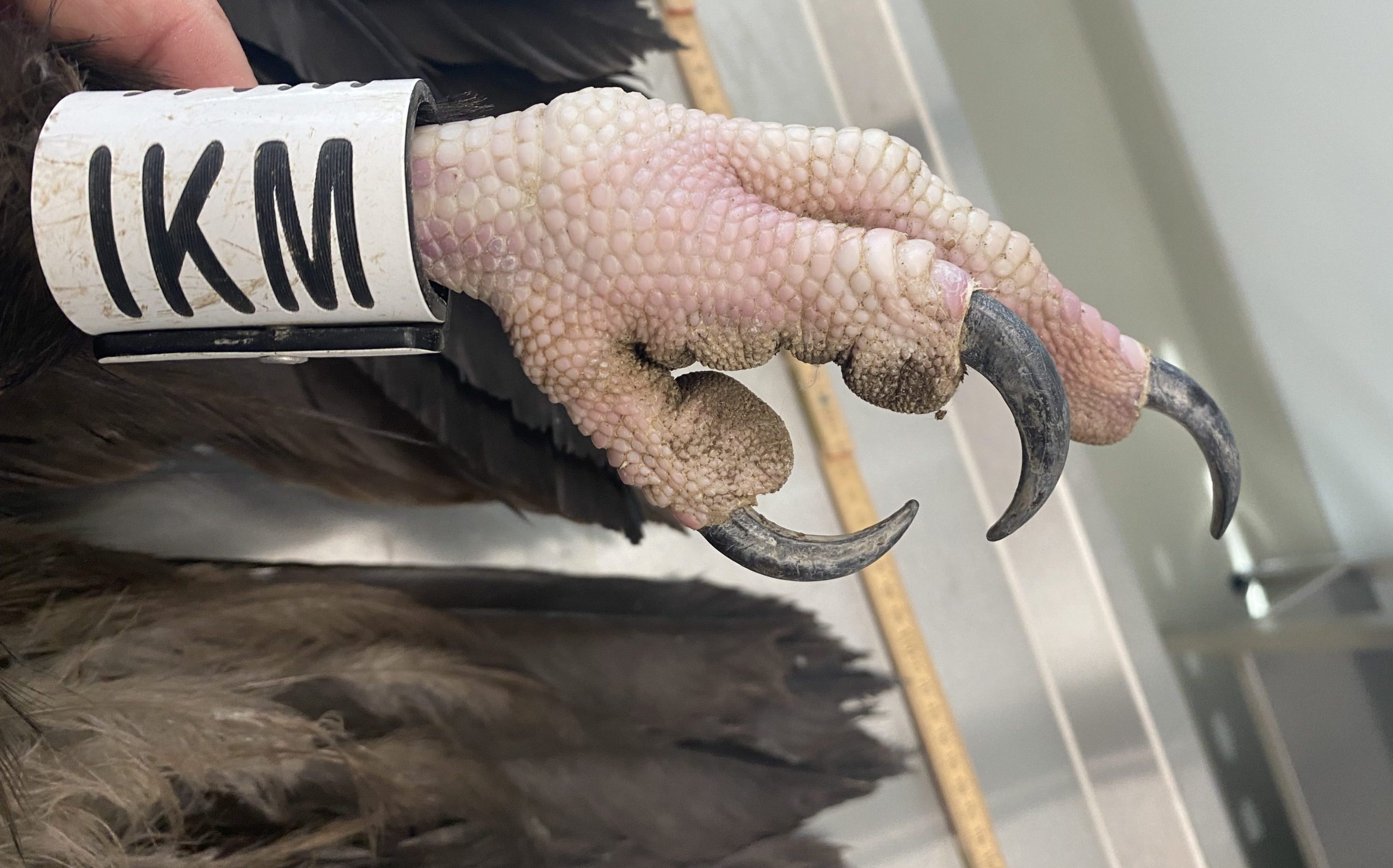
Cinereous Vulture died from starvation despite recapture
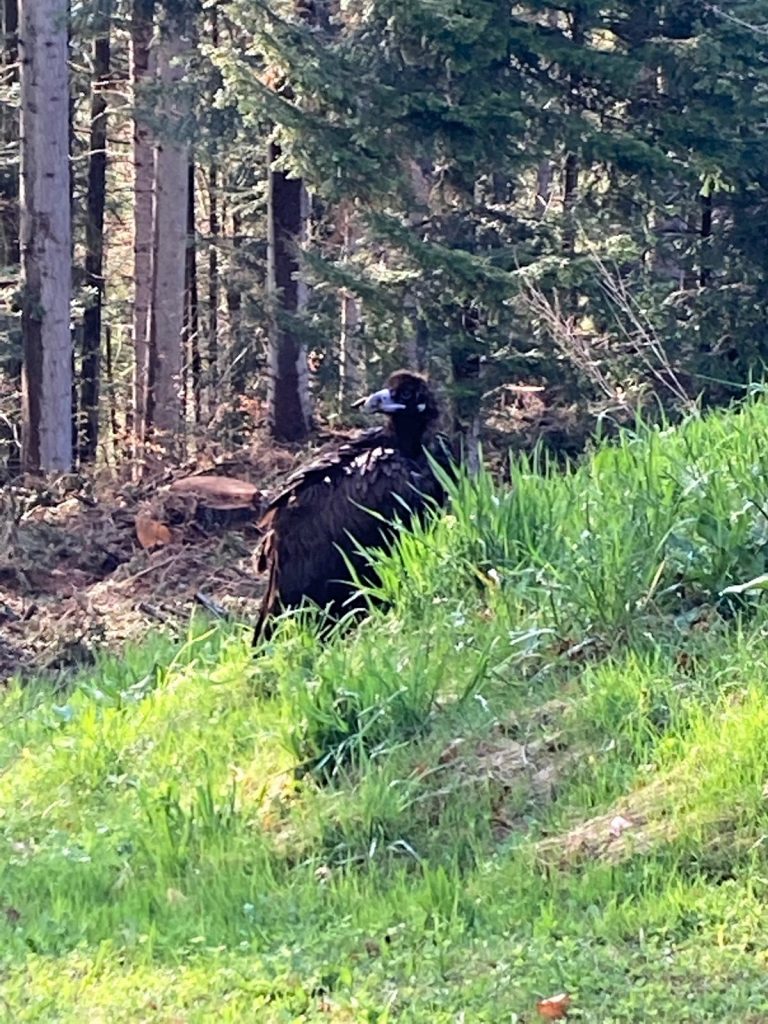
One month later, the young vulture reappeared 400 km to the northeast in the canton of Schwyz, unfortunately in poor condition. On 7 May 2021, a local resident reported the enormous bird strolling around the settlement of Egg above Sattel. The gamekeeper in charge, Markus Raschle, was able to catch the obviously weakened bird and brought it to Steve Diethelm, who runs a bird of prey care centre in Siebnen. He tried to feed the unresponsive vulture in the evening but found it dead in the aviary the next morning. It weighed just 4 kg, and practically only consisted of skin and bones.
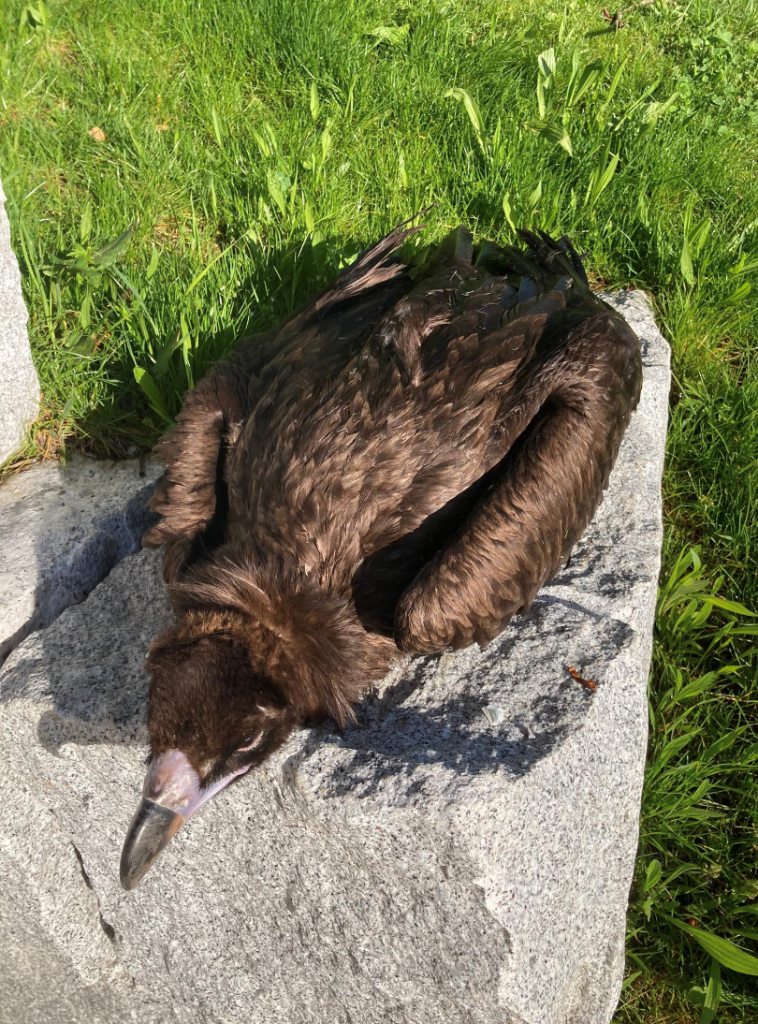
Necropsy reveals Cinereous Vulture died from plastic ingestion
In June, the Office of Hunting and Fishing of the Grisons in Chur, which is the place where dead birds of prey are routinely analysed, received the carcass for examination. The necropsy of the carcass revealed the cause of death: the stomach of the Cinereous Vulture was filled with plastic waste. There were numerous plastic strings, such as those used to seal rubbish bags, as well as parts of rubbish bags. It seems that this load of plastic in its stomach blocked digestion and the rare vulture likely starved to death.
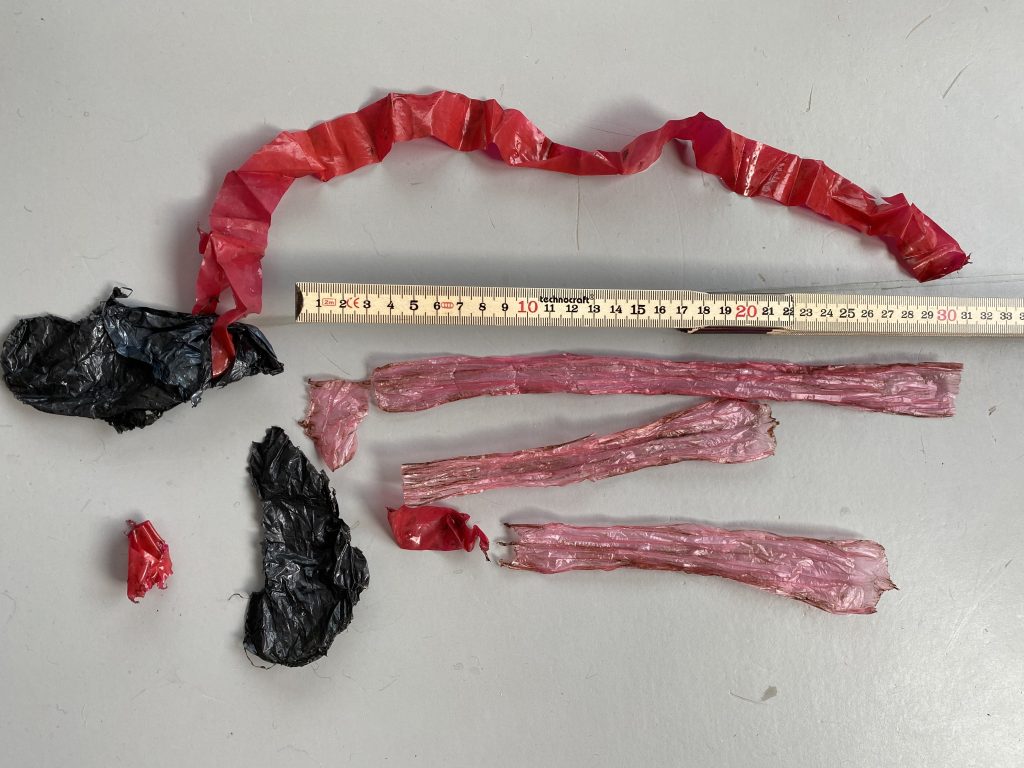
The plastic waste picked up by the Cinereous Vulture. How and where it swallowed it remains a mystery. © D. Jenny 
The plastic waste was mainly plastic straps used in tying trash bags © D. Jenny
Where and why the Cinereous Vulture ingested the plastic remains a mystery. But it shows us how important it is not to leave any plastic waste outdoors and to consider the needs and habits of wildlife in our dealings with waste.
